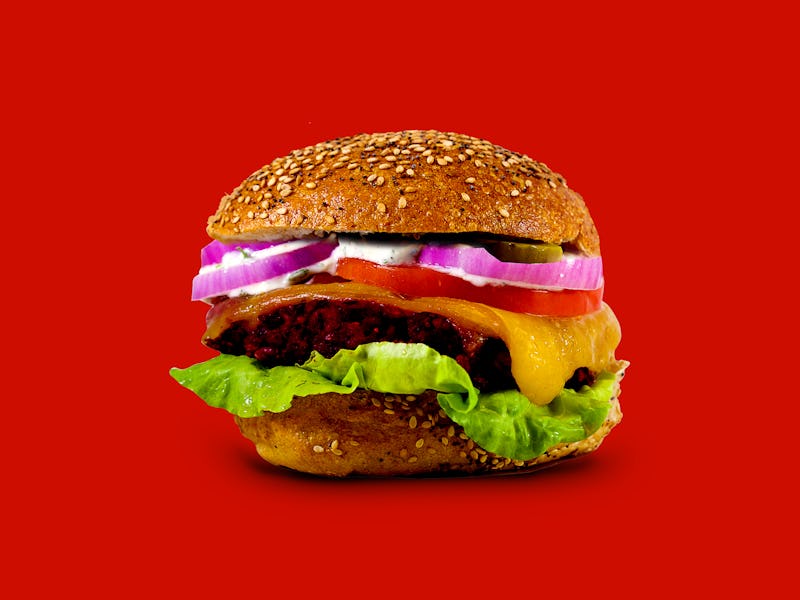Make one change to your routine to maybe live a little longer
Plus: Mysterious X-rays from Crab Pulsar may be more powerful than thought; the new ultra-luxury electric Mercedes EQS looks bonkers; there are microplastics in the atmosphere.

Not all takeout or delivery food is unhealthy, but on every popular delivery app during a cursory check I did just now, the landscape is dominated by pizza and cheeseburgers. Even the Uber Eats web page title has a pizza slice — 🍕 — emoji alongside its text.
A new study — and the subject of today’s top story — is all about what eating too much from a food delivery app can do to your lifespan. And look, everybody who lived through 2020 and the pandemic can understand why food delivery app usage boomed.
Food delivery apps Uber Eats, Grubhub, Postmates, and Door Dash brought in $5.5 billion in revenue between April and September 2020, which is more than double the $2.5 billion in revenue during the same period in 2019.
And what are front-and-center on those app interfaces? A lot of the time, it’s pizza and burgers. Even when links to healthy options are present, they rarely take top billing. More often they are below the pepperoni, cheese, and delicious, delicious bread.
Read more about how this macro trend is changing the diets of all of us below, along with more stories to change how you understand your world. I’m Nick Lucchesi, editor-in-chief at Inverse. I’m glad you’re here.
This is an adapted version of the Inverse Daily newsletter for April 13, 2021. Subscribe for free and earn rewards for reading every day in your inbox.
An all-too-familiar sight in 2020.
All things in moderation, even takeout — In a new study, researchers found those who very frequently ate meals prepared outside their home increased their risk of mortality, writes Sophie Putka:
This study serves as a compelling piece of evidence, suggesting those who ate outside the home very frequently were not only less healthy but were also at a higher risk of dying — even when the study authors adjusted for other factors like socioeconomic status, race, age, and body mass index.
In a time when more Americans than ever are eating outside the home, and there is an ever-increasing number of restaurants from which to choose, the temptation to eat out might be bigger than ever. But the very things that often make outside food so delicious might also put health at risk.
Also on the menu:
- Your takeout is getting a green upgrade
- One evolutionary advantage screws with food choices today
- PFAS: How many “forever chemicals” are in your pizza?
As microplastics go, these are large.
Microplastics are dangerously durable forever pollution — Every day, microplastics — often smaller than the head of a sewing needle — infiltrate our oceans, our seafood, and even our own bodies. Now, scientists say the problem is more extreme than previously realized, writes Tara Yarlagadda:
In a study published Monday in the Proceedings of the National Academy of Science, researchers suggest atmospheric microplastics — bits of fibers and fragments in the air — can re-enter the atmosphere, even if they’ve already settled on land or water.
Three striking findings are:
- 84 percent of atmospheric microplastics in the western U.S. originate from road dust.
- The greatest concentration of atmospheric microplastics is estimated to be over the ocean.
- While Antarctica contributes no microplastic emissions, it’s still polluted by microplastics.
More bits and bobs:
- High levels of microplastics may be in your oyster, study finds
- Microplastics are turning up in surprising places
- This tiny Trojan Horse could be an environmental disaster
Its futuristic design makes it seem like a starship on wheels.
The Mercedes EQS will make Tesla fanboys drool — This could be the most luxurious electric car ever made. But it's the enormous screens that'll draw the most attention, writes Jordan Golson:
Though it’s electric, the EQS will have an optional “driving sound” piped into the car, which will dynamically change based on 12 different parameters. These include pedal position, speed, and battery regeneration.
The car comes with a custom fragrance, piped into the cabin through the HVAC system, called No.6 MOOD Linen. The 6 in the name is a nod to the first electric Mercedes automobile, sold in 1906.
Read the full story and see photos ahead of the debut later this week.
Drive these next:
- Behold! The Huracán EVO is the first car that can be fully controlled with Alexa
- The 4 best tablet car mounts
- Lexus LF-Z 2021 might be the future of electric cars
What truths lie in the crushed cores of dead stars? — NASA's NICER telescope detected giant radio pulses from the Crab Nebula that were hundreds of times brighter than previously believed, writes Passant Rabie:
Using a telescope mounted on the International Space Station (ISS), a team of astronomers has detected giant radio pulses from the neutron star in the heart of the Crab Nebula. They discovered it to be tens to hundreds of times more energetic than previously believed.
“Out of more than 2,800 pulsars cataloged, the Crab Pulsar is one of only a few that emit giant radio pulses,” Teruaki Enoto, a researcher at the RIKEN Cluster for Pioneering Research in Japan and lead author of the new study, tells Inverse.
Go deeper:
- Intermediate black holes: Scientists have found the cosmic object's awkward phase
- Astronomers release new images of black hole M87
- One of the oldest black holes in the universe is trying to talk to us
That wraps up this Tuesday edition of Inverse Daily. I would like to thank you for reading so loyally! You can follow me on Twitter at @nicklucchesi, where I share some of my favorite stories from Inverse every day.